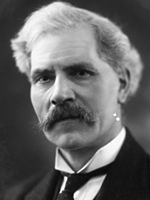National Government (1931) facts for kids
Quick facts for kids National Government |
|
|---|---|
1st National Government of the United Kingdom |
|
| August–October 1931 | |

Ramsey MacDonald
|
|
| Date formed | 24 August 1931 |
| Date dissolved | 27 October 1931 |
| People and organisations | |
| Monarch | George V |
| Prime Minister | Ramsay MacDonald |
| Prime Minister's history | 1929–1935 |
| Deputy Prime Minister | Stanley Baldwin |
| Total no. of members | 59 appointments |
| Member parties |
|
| Status in legislature | Majority (coalition)
353 / 615 (57%)
|
| Opposition party | Labour Party |
| Opposition leaders |
|
| History | |
| Outgoing election | 1931 general election |
| Legislature term(s) | 35th UK Parliament |
| Predecessor | Second MacDonald ministry |
| Successor | Second National Government |
The First National Government was a special type of government in the United Kingdom. It was formed in 1931 during a very difficult time called the Great Depression. This was a period when many people lost their jobs and money was scarce.
This government was different because it included members from several political parties. These were the Conservative Party, the Liberal Party, and a small group called National Labour. It also had some people who didn't belong to any party. The idea was for all these groups to work together to solve the country's problems.
Ramsay MacDonald was the Prime Minister who led this government. He had been the leader of the Labour Party before. However, because he decided to work with other parties, his own Labour Party expelled him. Many Labour supporters felt he had betrayed them.
Contents
How the Government Was Formed

Before this government, the Labour Party was in charge, but they were a "minority government." This means they didn't have enough members in Parliament to pass laws easily. They couldn't agree on how to cut down on government spending, which was needed during the financial crisis.
So, on August 24, 1931, Prime Minister MacDonald resigned. King George V then asked him to form a new government. The King believed it was MacDonald's duty to help the country during this tough time.
The new government was called a "National Government." The goal was to bring together talented people from all parties. This way, they could represent the whole country, not just one political group. However, most of the Labour Party refused to join. So, the government ended up being made of MacDonald's small National Labour group, the Conservatives, and the Liberals.
The Liberal Party itself was a bit split. One part, led by Sir Herbert Samuel, supported free trade. Another part, called the Liberal Nationals, agreed with the Conservative idea of protecting British industries. Both these Liberal groups supported the new National Government. A third group, led by David Lloyd George, didn't support the government for long.
The General Election of 1931
At first, the National Government wasn't planning to have an election. But the Conservative Party pushed for one. The Liberal Party, led by Sir Herbert Samuel, didn't want an election, but they couldn't stop it.
Parliament was officially closed down on October 8, 1931. The election happened on October 27, 1931. It was a huge victory for the parties that supported the National Government.
After this big win, Ramsay MacDonald formed a new government on November 5, 1931. This was known as the 1931–35 National Government.
Key Cabinet Members
The Cabinet was a small group of the most important ministers in the government. Here are some of the main people who were part of the Cabinet from August to November 1931:
- Ramsay MacDonald – He was the Prime Minister and the main leader in the House of Commons.
- Lord Sankey – He was the Lord Chancellor, a very important legal role.
- Stanley Baldwin – He was the Lord President of the Council, a senior minister.
- Philip Snowden – He was the Chancellor of the Exchequer, in charge of the country's money.
- Sir Herbert Samuel – He was the Home Secretary, responsible for law and order.
- Lord Reading – He was the Foreign Secretary, dealing with other countries.
- Sir Samuel Hoare – He was the Secretary for India.
- J.H. Thomas – He was the Dominions Secretary and Colonial Secretary, dealing with parts of the British Empire.
- Sir Philip Cunliffe-Lister – He was the President of the Board of Trade, in charge of trade and business.
- Neville Chamberlain – He was the Minister of Health, looking after public health.
Who belonged to which party?
- = Member of National Labour
- = Member of the Conservative Party
- = Member of the Liberal Party
The First National Government was a short but important period in British history. It showed how different political groups could come together during a crisis.
Images for kids



